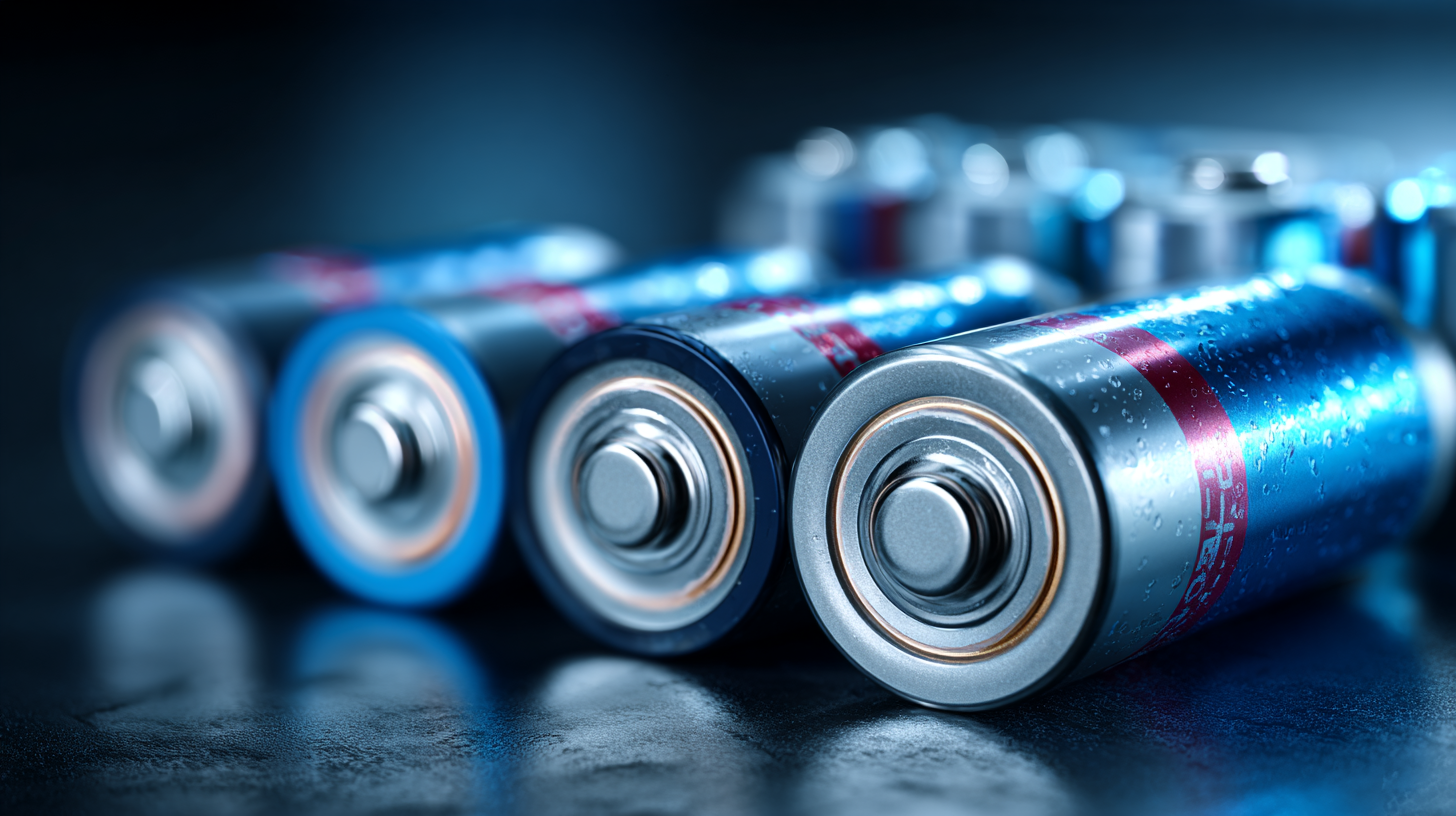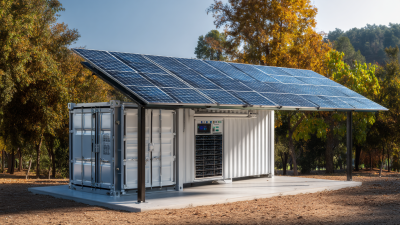Understanding Battery Power Efficiency Trends and Their Impact on Sustainable Energy Solutions
As the world increasingly shifts towards sustainable energy solutions, understanding battery power efficiency trends becomes crucial. The advancements in battery technology not only support the growing demand for renewable energy sources but also play a pivotal role in reducing our carbon footprint. This article delves into the intricacies of battery power, exploring the latest innovations and their implications for energy sustainability. We will examine how improvements in battery power efficiency can lead to longer-lasting energy storage options, enhanced performance in electric vehicles, and the overall evolution of green technology. By analyzing current trends and future projections, this piece aims to equip readers with the knowledge necessary to navigate the complexities of battery power and its transformative impact on our energy landscape.

Trends in Battery Technology: Innovations and Efficiency Improvements
The advancements in battery technology are pivotal for enhancing energy efficiency and supporting sustainable solutions. Recent innovations have showcased significant improvements in lithium-ion batteries, particularly in the Chinese market. With a remarkable 35.9% surge in EV battery installations in June 2025, it highlights the growing demand for high-performance energy storage systems. This growth is further propelled by the competitive nature of the market, pushing manufacturers to innovate continuously.
Emerging technologies such as graphene batteries present a promising frontier, offering faster charging times and increased overall efficiency. Additionally, Japan's strategic shift from lithium to sodium batteries emphasizes the importance of resilience in supply chains and diversifying energy storage options. As the solar energy sector expands, the need for efficient solar batteries becomes increasingly critical, driving further innovation. The collective focus on enhancing battery power efficiency trends will ultimately play a crucial role in achieving sustainable energy solutions.
Analyzing the Environmental Impact of Battery Production and Disposal
The production and disposal of batteries have significant environmental implications that cannot be overlooked. Manufacturing processes often rely on the extraction of raw materials such as lithium, cobalt, and nickel, which can lead to habitat destruction and pollution if not managed responsibly. Moreover, the disposal of batteries poses further risks, as improper disposal can result in toxic substances leaching into the soil and waterways, harming ecosystems and human health.
Tips: To mitigate these impacts, consider choosing batteries from companies that prioritize sustainability in their supply chain. Look for product labeling that indicates ethical sourcing and recycling options. Using rechargeable batteries can also significantly reduce the overall battery waste generated, promoting a more sustainable approach to energy consumption.
As technology advances, it’s crucial to focus on innovations in battery recycling methods. Improved recycling processes can extract valuable materials from spent batteries, reducing the demand for new raw materials and minimizing waste. Consumers can support this trend by ensuring their old batteries are disposed of at certified recycling facilities, thereby contributing to a circular economy.
Battery Power Efficiency and Environmental Impact
Comparative Study of Battery Types: Lithium-ion vs. Alternative Solutions
The exploration of various battery technologies is critical in addressing the increasing demand for efficient energy solutions. A comparative study shows that while lithium-ion batteries dominate the market due to their high energy density and widespread availability, they might not meet future energy needs sustainably. Recent advances suggest that sodium-ion batteries present a viable alternative, particularly as they offer lower ecological impacts compared to traditional lithium technologies. These batteries utilize less expensive raw materials, which could significantly reduce the overall life cycle emissions associated with electric vehicles and energy storage systems.

Moreover, the performance analysis of lithium-ion variants reveals that innovations in battery design, such as using different electrolytes, can optimize their efficiency. Research indicates that lithium thionyl chloride batteries, for instance, facilitate longer operational lifespans in smart building applications due to their unique performance characteristics. Furthermore, a life cycle comparison of the mining and recycling processes associated with lithium-ion batteries highlights the environmental impact associated with resource extraction. Emphasizing a transition toward alternative solutions like sodium-ion batteries may not only enhance power efficiency but also align with global sustainability goals as the push for greener energy solutions intensifies.
The Role of Energy Storage in Enhancing Renewable Energy Adoption
Energy storage technology plays a pivotal role in enhancing the adoption of renewable energy. With the global shift towards sustainable solutions, the Long Duration Energy Storage market is projected to grow considerably, driven by advancements in thermal, electrochemical, and mechanical technologies. The increasing implementation of these systems offers vital flexibility to integrate renewable sources like wind and solar into the power grid, addressing the intermittent nature of renewable energy and ensuring a reliable supply.
According to recent industry reports, the Fire Suppression for lithium-ion battery energy storage systems market is anticipated to reach USD 3,500 million, growing at a compound annual growth rate (CAGR) of 10.6% from 2025 to 2035. This growth reflects the increasing global adoption of lithium-ion storage systems, highlighting the necessity for improved safety and reliability in energy solutions.
Tips:
When implementing energy storage solutions, it's crucial to consider the specific technology that best fits your energy needs. Additionally, ensuring optimal fire suppression measures can significantly mitigate risks associated with battery storage systems, fostering a safer deployment of energy technologies.

Future Directions in Battery Research for Sustainable Power Systems
Advancements in battery research are crucial for the development of sustainable power systems. As the demand for clean energy sources rises, researchers are focusing on enhancing battery performance, longevity, and efficiency to better integrate with renewable energy technologies. Innovations such as solid-state batteries and alternative materials are paving the way for more reliable and sustainable power storage solutions. These advancements are not only improving energy density but are also reducing environmental impact, aligning with global sustainability goals.
Looking ahead, future directions in battery research must prioritize the circular economy, emphasizing recycling and the repurposing of battery materials. The exploration of biodegradable components is gaining traction, which could significantly mitigate waste associated with conventional batteries. Furthermore, improving the scalability of production processes will play a vital role in making sustainable battery solutions accessible and affordable. By fostering collaborations across disciplines, researchers can accelerate breakthroughs that will support the transition towards a more resilient and environmentally-friendly energy infrastructure.
Related Posts
-

Revolutionizing Energy Storage: The Future of Battery Solutions for Sustainable Living
-

Exploring the Future of Renewable Energy with Innovative Battery Store Solutions
-

Understanding the Advantages of Deep Cycle Boat Batteries for Your Marine Adventures
-

Essential Guide to Choosing the Right UPS Backup System for Your Home Office
-

Ultimate Guide to Choosing the Best Battery: Key Factors When You Buy a Battery for Optimal Performance
-

How to Maximize the Lifespan of Your Deep Cycle Batteries
